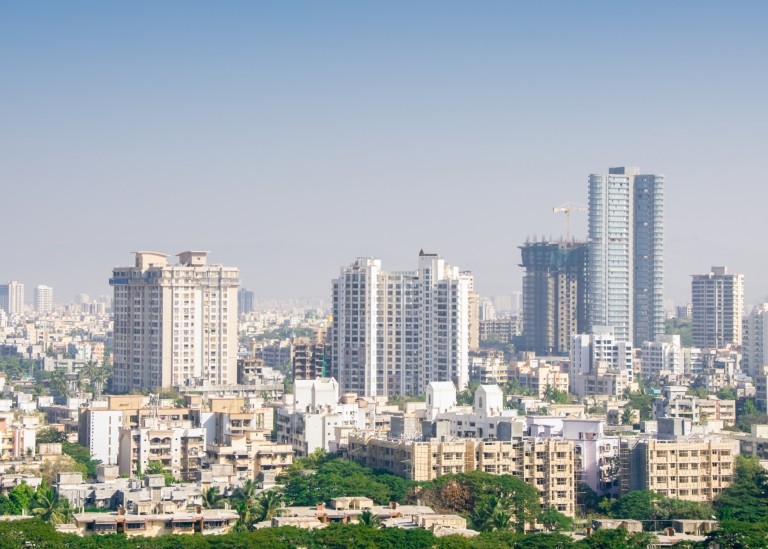What is an employer of record in India?
An employer of record (EOR) in India is a strategic partner that serves as the legal employer of your employees living in India. An EOR assumes all employment duties and liabilities on your behalf, managing payroll, benefits, taxes, and compliance. Partnering with an EOR allows you to hire employees in India without the burden of setting up a local entity in India or navigating intricate labor laws.
Employment Guide to Hiring in India
Explore the topics below to learn everything you need to know about hiring employees in India while following local labor laws.
Hiring in India
Employment Agreements in India
When employing an individual in India, entering into a written employment contract is not mandatory. According to India’s Industrial Employment Act 1946, some statutes require the employee to disclose prescribed particulars in writing. Where an employment contract is written, the following is included:
- The employee’s position and duties
- Compensation, including benefits such as bonus pay and retirement savings plan options
- Working hours, holidays, and leave entitlements
- Term of employment (where applicable) and termination provisions
- Dispute resolution provisions in relation to key employees
Probationary periods in India
India’s Industrial Employment Act of 1946 provides a probationary period of up to three months. Probationary periods are not required but are considered common practice. Certain states have the probationary concept indirectly built into their local laws, which range from three to six months.
Average working hours in India
Working hours are capped at 48 hours a week with 9 hours of work per day.
How an employer of record helps you hire in India
An employer of record (EOR) allows you to hire in India without the headache of setting up a legal entity in India or navigating complex India labor laws. Because most companies don’t have the resources or extensive knowledge to compliantly hire in international markets, an EOR helps you engage top talent from anywhere and support them based on their local needs.
As an industry-leading EOR in India, Velocity Global is a trusted partner in hiring in India. By acting as the legal employer, we hire your new team members through local, compliant employment contracts—and you get back the time and flexibility to focus on your growing business.
Draft compliant contracts in minutes
Quickly generate and send employment contracts that comply with local HR laws. Stay ahead in the talent race and start hiring now.

Payroll and Wages in India
Payroll Cycles in India
The payroll cycle in India is generally monthly, with wages paid on or after the 28 of each month.
Wages in India
Under India labor law, there is no nationally applicable minimum wage in India that applies to all employees. In India, the central and state governments can set minimum wages at varying rates for different types of employment. As a result, the minimum wage differs across the states of India and by various industries, sectors, and occupations. India uses a complex method of setting minimum wages that defines nearly 2,000 different types of jobs and over 400 categories of employment, with a minimum daily wage for each kind of job.
For example, in the state of Karnataka for the year 2021, the minimum monthly wage for a computer operator or a data entry operator was 15,744.47 rupees ($201.85), while a manager had a rate of 18,146.20 rupees ($232.64).
The federal government has set the recommended minimum wage in India to 176 rupees ($2.26) per day and advised state governments to implement the same.
Bonus Payments in India
India’s Payment of Bonus Act 1965 provides a minimum bonus of 8.33% (or 100 rupees, whichever is higher) and a maximum bonus of 20% of wages during the accounting year.
How an EOR helps you run payroll in India
An employer of record (EOR) in India helps you compliantly manage your global team payroll, ensuring consistent and accurate pay and tax withholdings for employees living in India. Think of an EOR as your international HR team that understands the complex labor laws and payroll regulations of different markets.
Partnering with a trusted EOR partner like Velocity Global for global payroll administration in India offers numerous benefits, like access to a centralized platform for payroll data and reporting, secure data privacy and protection, and time and cost savings.
Overtime in India
Under India labor law, overtime is payable when an employee exceeds the working hour limits regulated by their employment contract. Under India’s Minimum Wages Act 1984, overtime wages are double the amount of ordinary wages, although individual states in India have certain rights to modify these limits on a regional basis.
Taxes in India
Tax due dates in India
In India, the due date for filing an income tax return varies based on the taxpayer’s category.
Tax thresholds in India
Residents and resident companies are taxed on global income, while non-residents and non-resident companies are taxed only on income generated in India. Once non-residents stay in India for 182 days or more during the relevant tax year, they are considered residents.
India established a Goods and Services Tax (GST) in 2017, implementing a tax structure to eliminate double taxation, which cascaded from the manufacturing level to consumers. The tax rate is a sliding scale from 0% to 28%, depending on the goods and services.
For the financial year 2021 to 2022, the following income tax rates apply for employees under 60 years of age (this is measured in lakh, where 1 lakh is equivalent to 100,000 rupees):
- Income of 0 lakh up to 2.5 lakh: 0%
- Income of 2.5 lakh up to 5 lakh: 5%
- Income of 5 lakh up to 10 lakh: 20%
- Income above 10 lakh: 30%
Employer contributions include up to 12% for the Employees’ Provident Fund (pension fund), 3.25% for health insurance, 0.50% for the Employees’ Provident Fund Administration Fee, and a fixed amount for Employee Deposit Linked Insurance.
Health insurance in India
The Employees’ State Insurance Act 1948 provides subsidized healthcare insurance for employees who earn monthly wages of up to 21,000 rupees. This law applies to factories and establishments with 10 or more employees. Employees contribute 0.75%, and employers contribute 3.25% of the employee’s earnings.
Pension in India
The typical retirement age in India is between 58 and 60 years of age, which is governed by the Employees’ Provident Fund Act 1952 and the Industrial Employment Act 1946. The Employees’ Provident Fund Act 1952 applies to establishments that employ more than 20 employees and employees who earn up to 15,000 rupees per month. The employer and employee must make contributions to various funds (pension and deposit-linked insurance) for the employee. These employer and employee contributions equate to 12% of the total employee’s earnings.
How an EOR helps you calculate taxes in India
Payroll taxes are taxes imposed on employers and employees. They vary between countries, making compliance a hurdle for businesses that may not have the expertise or resources to navigate payroll taxes in India.
As an employer of record (EOR) with a tenured global footprint, Velocity Global is knowledgeable in handling all aspects of payroll and taxes in India for you, including calculating and filing payroll taxes, withholding and remitting taxes, and issuing tax forms in India.
Calculate payroll contributions in India
Please fill out your contact information and hiring details, and an expert from our team will be in touch with you shortly.
Leave Entitlements in India
Annual leave in India
Employees in India earn a minimum of 15 days’ leave a year; however, laws vary between states. Employees can also benefit from 10 additional days of casual leave, where an employee can opt not to come to work that day without applying for leave in advance.
Parental leave in India
The Maternity Benefit Act 1961 provides salary-paid leave to pregnant women during the maternity period and protection against dismissal during their leave. This applies to eligible female employees who have completed 80 working days with the same employer in the 12 months immediately preceding the expected due date.
In 2016, the Maternity Benefit Act 1961 was amended to include:
- An increase in paid time off for eligible female employees from 12 weeks to 26 weeks if a female employee has fewer than two children. She is entitled to 12 weeks’ leave if she has two or more children.
- The introduction of the concepts of a “commissioning mother” and an “adopting mother.” Such mothers are entitled to 12 weeks’ leave.
- The option to work from home once the leave period has ended is based on an employer’s agreement.
- Requiring an establishment with 50 or more employees to organize childcare for female employees’ children.
A female employee is also entitled to an additional six weeks of paid maternity leave in the event of a miscarriage or medical termination of the pregnancy.
Furthermore, a woman suffering from an illness arising from pregnancy, delivery, premature birth, miscarriage, or medical termination of pregnancy is entitled to an additional month of paid maternity leave. A medical bonus of 3,500 rupees ($44.84) is provided to these employees, who are entitled to certain prescribed nursing breaks.
There is no law mandating paid paternity leave in India for private-sector businesses. However, India’s federal and most state governments allow married male employees to take two weeks of paid leave within six months of the child’s birth.
Sick leave in India
State laws regarding sick leave vary, but most states offer around 10 days of paid sick leave. Any unpaid time off provided to an employee is purely at the employer’s discretion.
Regional and national holidays in India
Public holidays in India vary from state to state. However, most states prescribe about 10 days of public holidays per year, with paid time off provided to allow employees to vote. Of the 10 public holidays, four to five of these are mandatory national holidays, while the remainder are chosen by employers from a larger list provided by the state. Public holiday entitlement is generally covered by the employment contract.
Regional and national holidays in India include:
- Lohri (January 13)
- Republic Day (January 26)
- Maha Shivaratri/Shivaratri (March 11)
- Dolyatra (March 28)
- Holi (March 29)
- Good Friday (April 2)
- Ambedkar Jayanti (April 14)
- Rama Navami (April 21)
- Mahavir Jayanti (April 25)
- Ramzan Id/Eid-ul-Fitar (May 14)
- Buddha Purnima/Vesak (May 26)
- Bakr Id/Eid ul-Adha (July 21)
- Muharram/Ashura (August 9)
- Independence Day (August 15)
- Janmashtami (August 30)
- Mahatma Gandhi Jayanti (October 2)
- Dussehra (October 15)
- Milad un-Nabi/Id-e-Milad (October 19)
- Diwali/Deepavali (November 4)
- Guru Nanak Jayanti (November 19)
- Christmas (December 25)
How an EOR helps you manage leave and PTO in India
An employer of record (EOR) supports companies by managing annual leave, paid time off (PTO), and even local holidays all over the world—including India. When it comes to handling a company's annual leave requirements, an EOR ensures compliance with local labor laws in India at every step.
Some EOR partners, like Velocity Global, provide a platform that helps you oversee employee time off in India. By outsourcing leave and time-off management to Velocity Global, you can ensure accurate tracking, compliance, and seamless administration, freeing up valuable time and resources for other business priorities.
We’re here to help you hire in India
Get expert guidance with global hiring, payroll, benefits, and compliance.

Employment Benefits in India
Federal benefits in India
Mandatory employee benefits in India are covered under five key statutes.
- Employees’ State Insurance Act 1948: medical insurance, disability insurance, and unemployment benefits
- Employees’ Provident Fund Act 1952: pension fund
- Maternity Benefit Act 1961: paid parental leave
- Payment of Gratuity Act 1972: employee separation and retirement benefits
- Employees’ Compensation Act 1923: employee death, injury, partial disability, and occupational disease insurance
Supplemental benefits in India
Supplemental benefits are add-ons to statutory benefits that Indian employers commonly provide to employees. These include:
- Medical insurance
- Accident insurance
- Retirement funds
Additional medical coverage is the most common supplemental benefit Indian employers provide to management-level employees. Many employer-sponsored medical insurance plans offer coverage for maternity care, cancer treatments, and fertility treatment. Supplemental medical plans often extend to include dependents and partners.
Employers also commonly offer life and AD&D (accidental death and dismemberment) coverage as a supplemental benefit. Supplemental life and AD&D coverage provide employees peace of mind by covering their families in uncertain situations.
Some employers in India offer transportation allowance, meal vouchers, and even mobile or internet reimbursements.
How an EOR helps you administer benefits in India
As the legal employer for your employees living in India, an employer of record (EOR) administers statutory benefits and ensures they are enrolled and contributing to the appropriate government benefits. Additionally, an EOR partner manages the administration of supplemental benefits, including ensuring employees in India receive tailored, expert-vetted, and competitive supplemental benefits packages.
Velocity Global makes understanding foreign statutory and supplemental benefits easy and offers your workforce competitive benefits packages tailored specifically to India and beyond.
Terminations in India
Notice periods in India
As defined in India’s Industrial Disputes Act 1947, all employers must give a 30-to-90-day notice period to employees whose primary roles are not supervisory, administrative, or managerial. Certain sectors require government approval before termination; most only require government notification.
Severance pay in India
Severance includes 15 days’ pay due to employees for each year worked.
How an EOR helps you process terminations in India
An employer of record (EOR) is responsible for processing terminations in the event you need to terminate an employee in India. This may include adhering to local labor laws and regulations regarding termination procedures, including notice periods, severance pay, and any other statutory requirements.
As an EOR with experience in terminations, Velocity Global helps businesses minimize the risk of legal disputes or liabilities in India.
FAQ
-
How does Velocity Global’s EOR help businesses expand into India?
An experienced employer of record (EOR) partner like Velocity Global makes it easy for companies to quickly and compliantly build and support distributed teams in India without the time and effort of establishing an entity. Velocity Global hires, pays, and manages your team in India on your behalf, allowing you to quickly engage talent without setting up local entities or worrying about violating local employment regulations. Partnering with an EOR in India is ideal for companies that want to convert contractors in India to employees, streamline mergers or acquisitions, or simply test the India market before making a long-term investment.
-
Can I hire in India without an employer of record?
Yes. There are two options available for hiring in India without an employer of record (EOR): establishing a local entity or engaging contractors in India.
Establishing an entity in India allows you to create a local branch or subsidiary, giving your company full autonomy over hiring and onboarding. This is a good option if you plan to hire a large team or establish a long-term presence in India.
However, entity establishment is a costly and time-consuming process. It requires in-country expertise with local employment and tax regulations and can delay your ability to hire talent in India for many months. If you're not prepared for long-term investments in India or intend to hire a small team, setting up an entity can often be more trouble than it's worth.
Hiring contractors is a flexible, affordable alternative to hiring employees in India, though it involves unique misclassification risks.
-
How are employees and contractors classified in India?
In India, courts use control and integration tests, plus other criteria, to distinguish between employees and independent contractors.
Here are the factors used to determine the status of an employee in India:
- Terms and conditions communicated in the employment contract
- Degree of control the employer has over the work
- Integration into the business operations
- Nature of the work and establishment
- Paymaster and payment structure (salary, wages, benefits)
- Appointing authority
- Ownership of tools and equipment
- Length of alternative service
- The right to reject
- Who can dismiss
-
What are the benefits and challenges of hiring in India?
India is one of the world’s fastest-growing countries in terms of both population and GDP. India’s GDP is projected to grow to $5 trillion by 2025 and $8.4 trillion by 2030. Its diverse business sectors offer companies from all industries a chance to increase their global market share. In particular, tech firms find India’s booming tech industry one of the world’s most promising talent pools.
India is the world’s second-largest online marketplace, surpassed only by China, with over 560 million internet users. By 2025, India’s connectivity is estimated to reach over 850 million, more than the combined population of all G7 countries. India is home to the second-largest English-speaking population in the world, ranked only behind the United States. India has around 265 million English speakers, with 88% residing in urban areas with diverse economic opportunities.
However, hiring in India poses challenges too. India consists of 28 states, and they all have different laws. When a business expands into India, it must understand that the laws surrounding its products and services can vary from state to state. Companies must also consider how India’s central, state, and local taxes apply. Relying on an EOR in India helps firms navigate complex laws and ensure compliance.
India’s infrastructure may present hurdles with customs, logistics, and tracking. Businesses considering expanding into one of India’s more rural areas must examine how the region’s less-developed infrastructure impacts mobility, exports, and overall operations. Like legal differences, companies must anticipate and navigate cultural and geographic differences between states. India is the world’s seventh-largest country by land area, with starkly different geographies home to numerous ethnic groups, castes, religions, and sects. Companies must consider that what works in one state may not in another.
-
What cultural nuances should businesses consider when hiring in India?
India has the second-largest population in the world. The country is a pluralistic society with vast cultural differences between regions. English is the official language of business, but be wary that some English phrases may not translate correctly. Indians value relationships greatly; engaging in small talk and discussing family with colleagues is encouraged.
Be aware of cultural diversity and be cautious of generalizations. Use formal, gendered titles to greet clients and during conversation, such as Dr., Professor, Madam, or Sir. Shake hands during introductions; however, expect some Indians to introduce themselves with the namaste, a customary Hindu non-contact manner of respectfully greeting by pressing both palms together with a slight bow of the body.
There is a formal and hierarchical relationship between managers and employees. Be sure to greet the most senior member first during a team meeting when doing business in India. Be prepared for meetings to begin and end late and for interruptions to occur. Refrain from forceful negotiation and understand a deal may take longer than expected. Many Indians base final decisions on trust, intuition, and data; positive working relationships are vital in solidifying decisions.



